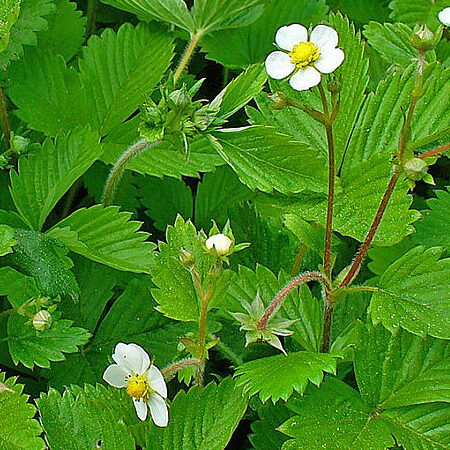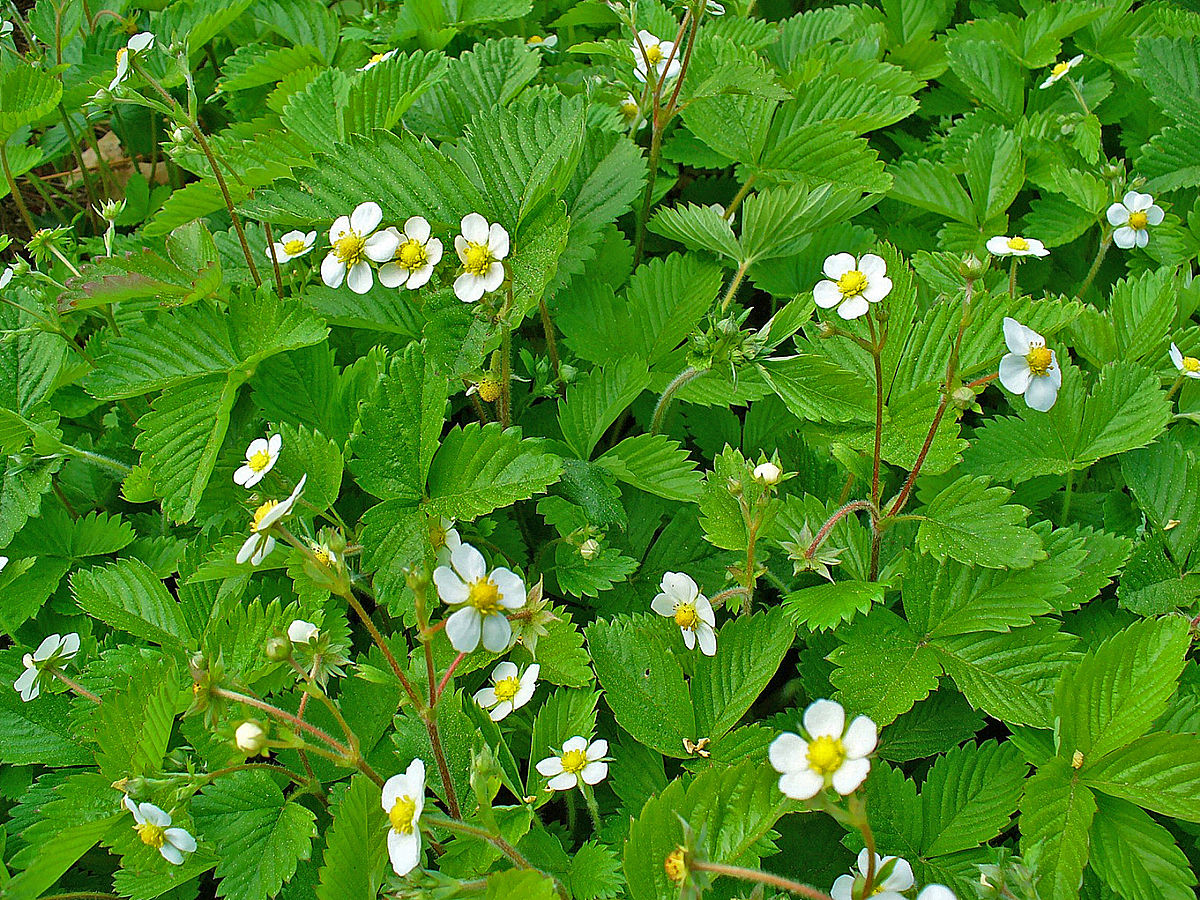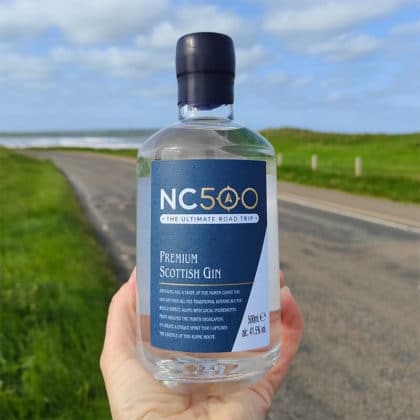Wild strawberry (Fragaria vesca) is known by a variety of different names including ‘Alpine strawberry’, and ‘Woodland strawberry’. It is a perennial herbaceous plant in the Rosaceae family which grows naturally in temperate and sub-tropical areas of the Northern Hemisphere. Wild strawberries grow to between 5–15 centimetres tall.
The botanical has trifoliate leaves at the tips of long hairy petioles. The tops of the leaves are green to bluey-green in colour and pale green underneath. The leaflets are oval and have coarse teeth along the edge except near the bottom. Wild strawberry flowers bloom from April to June and are 1–2 centimetres wide with five round to oval white petals.

The botanical has about twenty yellow stamens surrounding a yellowish centre. Wild strawberry flowers produce small, globe-shaped red strawberries. However, in the strictest botanical sense, this is not the edible part of the wild strawberry, as it does not contain seeds. The fruits are the tiny yellow or white specks embedded into the flesh of the botanical, known as achenes, each one containing a seed. There are around two hundred in each wild strawberry, protected by what is in effect an enlarged receptacle of the flower, which proves irresistible to humans and wildlife alike.
Wild strawberries produce hairy runners which grow up to 5 centimetres long, and re-root to form plantlets. Producing runners is the main way that the wild strawberry reproduces since seed germination is poor. The name strawberry derives from the Old English word ‘streawberige’ or ‘streabariye’ – literally ‘to strew’. This word first recorded by Benedictine monks in 995 relates to the sprawling nature of wild strawberry runners. It was not until the 15th century that the now familiar ‘strawberry’ was adopted.
Beautiful Botanicals – a Wild Strawberry thief
Artist, textile designer, architectural conservationist, and social activist William Morris (24th March 1834 – 3rd October 1896), associated with the British Arts and Crafts Movement, immortalised the wild strawberry in his famous ‘Strawberry Thief’ pattern. He was inspired by what he had seen one day in the grounds of his home at Kelmscott Manor, in Oxfordshire – a hungry thrush swooping down to take a wild strawberry in its beak.
Wild strawberry leaves have been valued since Roman times for their medicinal properties as they have antiseptic, emollient, and dermatological protection properties. English herbalist Nicholas Culpeper (18th October 1616 – 10th January 1654), in his book the Complete Herbal (1653), notes that tea made from the dried leaves of wild strawberry is astringent and was used in the past as a treatment for diarrhoea. Culpeper also states that a cold decoction of wild strawberry leaves helps cool the liver, the blood, and the spleen. Whilst a hot decoction helps treat a choleric stomach, refreshes and comforts failing spirits and quenches thirst.

Whilst not commercially cultivated due to their small size and low yield, wild strawberries have a superior flavour to commercially cultivated fruit. Evidence from archaeological excavations show that humans have eaten wild strawberries since the Neolithic period as the flowers, fruit, and leaves are all edible. The leaves and flowers of the botanical are used in the manufacture of herbal teas and add flavour to salads.
Whilst, throughout France and Central Europe, the berries are utilised in patisserie and bakery products, and to make jams, juices, sauces, and liqueurs.
In gin manufacture the fruit of the wild strawberry adds a slightly sweet, fruity note to the spirit. Whilst wild strawberry leaves add heady herbaceous elements to the gin.
Strawberry is also a fabulous garnish to adorn your glass. Not only does it look very appealing but it can enhance your drink adding a fruitier nose. We suggest our NC500 Gin is garnished with a strawberry and our current Refill Rewards Club Guest Pouch this quarter is Strawberry Lemonade, which is also garnished with a strawberry.






